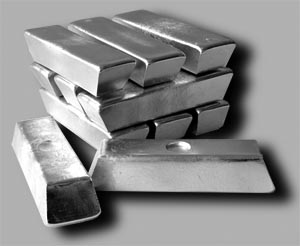Tin foil, tape

History
The Chinese and the Sumerians started smelting tin over sixty centuries ago, but still quite a long time the metal remained expensive and inaccessible. Glassware is rarely found in Greek and Roman excavations. On the tin it is possible to find mentions in the Bible, in the Book of Moses IV. Along with copper this metal is a constituent of bronze which has become the companion of man from the III Millennium BC and was the strongest at that time alloy. Tin remained the so-called «strategic metal» during the «bronze age», that is, more than two millennia. It is considered that the Latin name stаnnиm is derived from Sanskrit, it means «strong, steadfast». First, the so-called alloy of lead and silver. And only much later became known as the other alloy, with up to 67 per cent tin. Pure tin was able to smelt only in the 4th century.
General characteristics
In the periodic table is element number 50 is indicated with the chemical sign of Sn, atomic mass it is 118.7, specific weight equal to of 7.31 g/cm3. Begins to melt at a temperature 231,9°C; boils at t° 2620 °C, Perfectly conductive. Its electrical resistivity at 20 °C = 0,115 0m•mm2/m. as for the word tin — Slavic, has roots in the Baltic languages (cf. lit. Alvas, alavas — «tin», Pruss. alwis translated as «lead»).
| Physical quality Sn | |
|---|---|
| Atomic (molar) mass, g/mol | 118,71 |
| Atomic number | 50 |
| Density [g/cm3] | Of 7.31 |
| The melting temperature t°C | 231,9°C |
| The degree of oxidation | 4, 2 |
| The thermal conductivity K [W/(m·K)] | 16,3 |
| Molar volume cm3/mol | 66,8 |
Dignity
This is a fairly common low-melting corrosion-resistant metal. biologically inert, very plastic. Available to all currently known types of treatment. Easily subjected to cutting, stamping, drilling, well soldered, rolled, bent. After recycling can be reused. Its technology is very simple and relatively inexpensive. Has excellent performance characteristics that make it popular in modern production. Its price is around $ 18/kg, cleaned the tin dioxide is about $ 25/kg tin single crystal having high purity — 210 $ /kg.
Disadvantages
Tin can not be attributed to durable materials designed for heavy loads.
Application
Tin in its indispensable characteristics as body-safe, corrosion-resistant coating. It is the most «green» among the other heavy nonferrous metals. It is tinplate is tin-plated iron containers for food products. Tin is indispensable for the execution of solders, as well as in domestic pipelines. It is used for the manufacture of babbit bearing. The most well-known alloy of tin — bronze. Another popular alloy is a computer — it serves for the process of pottery. Sn is used in the superconducting wires manufactured on the basis of an alloy with niobium is the main alloying element for the structural alloys of titanium. It should be noted that the alloy with Sn-Zr are very heat resistant (t° melting point 2000°C) and highly resistant to oxidation in the open air during heating.
In chemical current sources Sn is used as the anode in a manganese-tin elements or in the form of mercury oxide, tin. It is advantageous to use for lead-tin battery. This is due to the fact that at equal voltage capacity of this battery is 2.5 times larger than compared to the lead (5 times more than the level of Energoproject per unit volume), the internal resistance of it is much lower.
Buy at best price
In stock LLC «AVEK global» always in an unlimited range of non-ferrous metals at attractive prices. Our proposed price will satisfy any customer. You can place your order via our branch or website of the company «AVEK global». Quality is guaranteed by strict adherence to production standards. Deadlines for all orders is minimal. The price depends on the order quantity for wholesalers provides a discount program.


